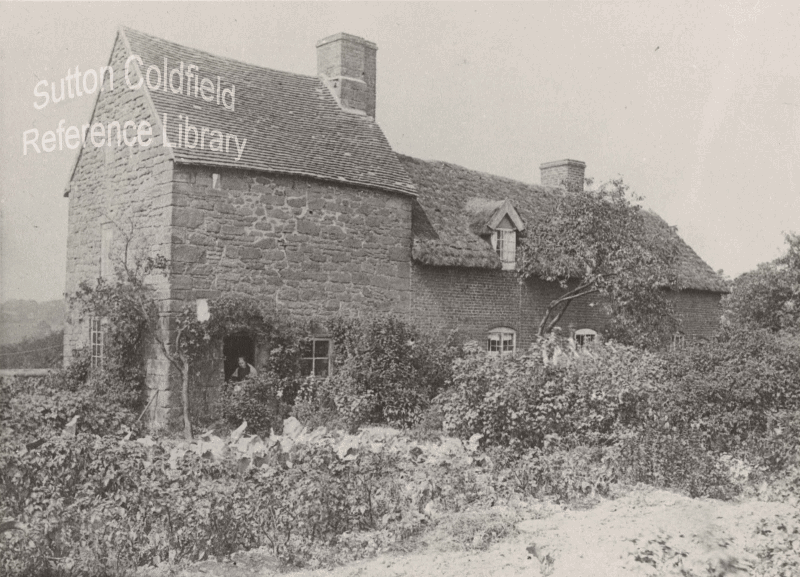Sutton Coldfield has a number of stone houses dating from the sixteenth century of a kind not found anywhere else in England. According to the great historian Sir William Dugdale, Bishop Vesey built fifty-one of these stone houses here, where previously almost all the houses had been timber-framed.
High Heath Cottage is the smallest of the surviving stone houses, built in an isolated spot. In the 1530s it was surrounded by the open commons of High Heath, and today it stands alone in the middle of bleak hedgeless farmland. It is a tall house, with three storeys connected by a stone spiral staircase, but narrow, with only one room on each floor, and a massive chimney.
Writing in 1544, John Leland said that Vesey built the houses for his poor kinsmen, but other sources suggest that they were built to house servants of the Bishop who would keep order in outlying parts of Sutton. The house at High Heath has the appearance of a watchtower, and it looks across the valley to a lonely stretch of the old coach road from Coleshill to Lichfield (now the A446) where highwaymen could lurk.
The cottage was easy to defend from attack, having, originally, only one ground-floor window. There is a local tradition that a man who had stolen a sheep barricaded himself in the cottage - this at a time when sheep-stealing was a hanging offence. He is supposed to have held out for a considerable time, and so the cottage used to be known locally as “Mutton Castle”.
In the nineteenth century the cottage was part of the Moor Hall Estate belonging to the Hacketts of Moxhull, and by 1824 a row of three cottages had been built adjoining it. All four of the cottages were occupied by farm labourers in 1851; one of them, William Lunt, had seven children. The adjoining cottages fell into disrepair, and eventually the end one was converted to form an extension to the stone house to make a single dwelling - the present-day High Heath Cottage stands alone in the landscape much as it did 460 years ago.
